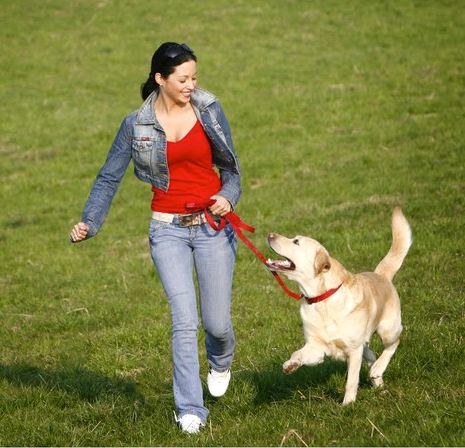Allelomimetic behavior means doing the same as others do. Allelomimetic behavior, which has elements of social facilitation, imitation, and group coordination, is occasionally referred to as contagious. When an animal engages in a behavior, it increases the likelihood that some other animals will do the same or increase the intensity of the behavior.
Allelomimetic behavior can develop at any time of life and occurs in many species, usually beginning in youth. This behavior will persist throughout life, especially if one lives in a sizable community that strongly emphasizes group cohesion. Synchronous activity is essential for cohesion, which is necessary for group living. When animals in large, cohesive groups adopt allelomimetic behavior, there are costs and benefits to consider. Predation risk drops dramatically, but there will be more inter-individual rivalry for primary resources like food, mates, and space. Many group decisions in animals result from allelomimetic behavior. A few examples are the choice of a single aggregation site by cockroaches, schooling behavior in fish, and pheromone-based path selection in ants, which allows all workers to travel down the same path to a particular food source.
Social animals benefit from acting in the same ways as their group members. That suggests that some degree of synchronization is advantageous when animals change behaviors, such as from laying to grazing. Sometimes this synchrony results from environmental cues.
Animals keeping constant contact with one another will inevitably develop allelomimetic behavior. Some behaviors are more likely to influence others to display the same behavior than others.
More often than we think, the way we act triggers the way our dog acts (photo by SunVilla).

Horses, like many animals, learn through imitation of their parents, most often the mother or the foal owner. The foal will not only mimic the mare’s walking style and speed, but it will also mimic her general behavior. If a foal were to spend much of its early life around a nervous mare, it would grow into an anxious adult. Miller (1996) also adds that allelomimetic processes can remove behavioral issues.
Allelomimetic behavior in dogs includes walking, running, sitting, lying down, getting up, sleeping, barking, and howling. All of these are likely to make others do the same.
Studies across several breeds of dogs regarding eating habits and stress vocalization when alone or with littermates have shown that most dogs will eat more in large groups than when they eat alone, and the same goes for stress vocalization.
Scott and Bronson replicated a study conducted by Fredericson in 1952 about the vocalization rates of beagle puppies confined in a box alone or with a companion. Scott and Bronson (1971) replicated and validated Fredericson’s finding that 75% of the puppies would vocalize much less while confined with another puppy than when alone. Several dogs showed signs of more significant distress when left alone in a new environment as opposed to one they were familiar with or in one they were in with their littermates. The increase in quiet behavior when multiple litter-mates are in an unfamiliar environment results from allelomimetic behavior. If one pup is calm, many dogs will mimic that behavior, creating a litter of relaxed dogs. In the same way, if one puppy is upset, other dogs could act the same way, though in experiments, the first case is more common.
Running after (or rather, “running with”) a running child is more often an example of canine allelomimetic behavior than hunting or herding, as many dog owners erroneously presume.

Social predators increase their rate of hunting success when they function in unison. One individual setting out after the prey is likely to trigger the same response in the whole group.
The wolf’s howl is allelomimetic, one more behavior our domestic dogs share with their wild cousins. Howling together functions as social bonding. When one wolf howls, the whole pack may join in, especially if a high-ranking wolf started it. I bet that if you go down on your knees, turn your head up, and howl (provided you are a half-decent howler), your dog will join you; then, it will attempt to show its team spirit by licking your face.
Sleeping and eating are examples of allelomimetic behavior. Dogs and cats tend to sleep and eat at the same time. Barking is also contagious. One barking dog can set the whole neighborhood’s dogs barking.
Synchronizing behavior may be a lifesaver. One individual can trigger the whole herd to flee, like in prey animals such as deer, zebra, or wildebeest. This trait is so crucial for self-preservation that farm animals like sheep, cows, and horses still keep it. Grazing also occurs at the same time.
Allelomimetic behavior is not restricted to animals of the same species. Animals of different species who live together show allelomimetic behavior regularly. Dogs are able body language readers and respond to certain behaviors of their owners with no need for further instruction. An alert owner triggers his dog’s alertness more often than the opposite.
Puppies show allelomimetic behavior at about five weeks of age. It is an intrinsic part of your dog’s behavior to adjust to the behavior of its companions. Your behavior influences your dog’s behavior in many more instances than you realize.
Since we have selected and bred our dogs to be highly sociable and socially promiscuous, they show extended allelomimetic behavior, copying the behavior of their closest conspecific companions and ours.
References
Clayton, D.A., (1978). Socially facilitated behavior. Quarterly Review of Biology, 53: 373-392. https://doi.org/10.1086/410789.
Compton, J.M; Scott, J.P (1971). Allelomimetic behavior system: Distress vocalization and social facilitation of feeding in telomian dogs. Journal of Psychology. 78 (2): 165. doi:10.1080/00223980.1971.9916900. ProQuest 1290586299.
Fredericson, E. (1952). Conceptual homeostasis and distress vocalization in puppies. J. Personal., 20, 472-77. DOI: 10.1111/j.1467-6494.1952.tb01122.x
James, W.T. (1952). Social facilitation of eating behavior in puppies after satiation. J. Comp. W Physiol. Psychol., 1953, 46, 427-428. https://doi.org/10.1037/h0056028.
Miller, R.M. (1996). Allelomimetic behavior. Journal of Equine Veterinary Science. 16 (7): 282–284. doi:10.1016/s0737-0806(96)80221-8. ISSN 0737-0806.
Scott, J.P., & Fuller, J.L. (1965). Genetics and the Social Behavior of the Dog. Chicago, Ill.: Univ. Chicago Press, 1965. ISBN: 0-226-74335-7. Also, as PDF.
Scott, J.P., & Marston, M. (1950). Social Facilitation and Allelomimetic Behavior in Dogs, Behaviour, 2(1), 135-143. doi: https://doi.org/10.1163/156853950X00053.
Stoye, S., Porter, M.A., Stamp Dawkins, M. (2012). Synchronized lying in cattle in relation to time of day. Livestock Science. 149 (1–2): 70–73. doi:10.1016/j.livsci.2012.06.028. ISSN 1871-1413.
Featured image by Cynoclub.
Feel free to leave a comment, pose a question, or share your thoughts. Your opinion matters. I will reply to all messages and answer all questions to the best of my ability.
